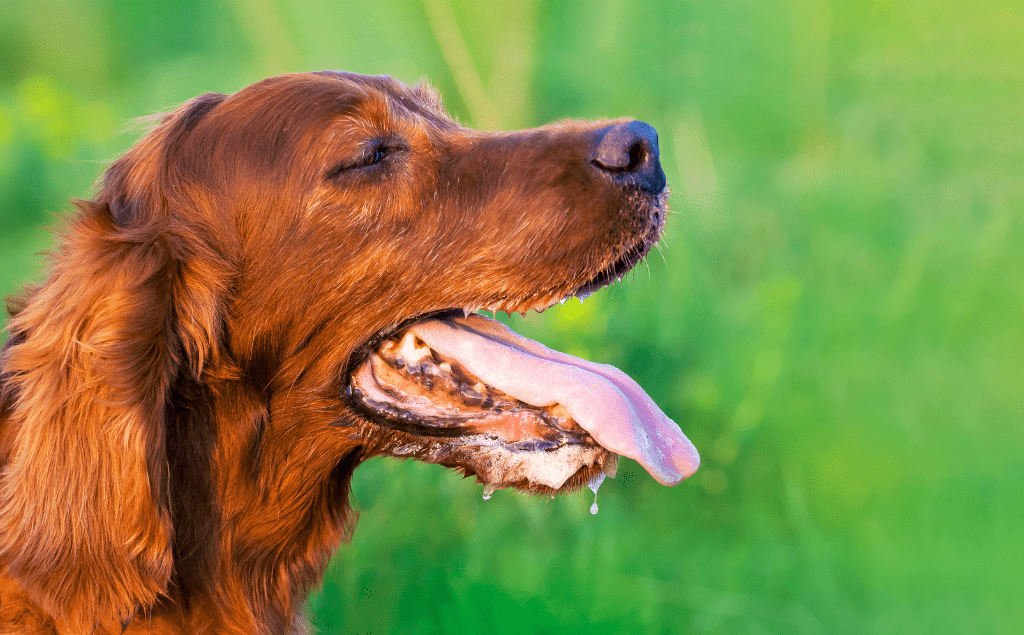How Can I Tell if My Dog Has Heatstroke?
Whether you live in hot climates or not, your dog may be at risk for heatstroke. Heatstroke is common in dogs who have been left unattended in vehicles (even on days that don’t seem too hot to humans), and it is also common in certain brachycephalic breeds.
Additionally, heatstroke may occur in dogs who have underlying health conditions that can exacerbate it.

6 Signs that Your Dog May be Experiencing Heatstroke
In this article, you’ll learn some of the most common symptoms associated with heatstroke in dogs. With the help of this information, you should be better able to tell whether your dog may be suffering from this very serious and unfortunately often fatal condition.
Some common signs your dog may have heatstroke include:
Excessive Drooling and Panting
The first symptom of mild stage heatstroke in dogs is excessive drooling, which often goes along with excessive panting. Dogs at this stage may be just beginning to feel the symptoms of heatstroke but have not reached the more serious stages. They will drool and pant to try to cool themselves down.
If you notice your dog behaving like this and know that they have been in hot temperatures, take them indoors immediately. Put them by a fan or air conditioner and give them plenty of fresh, cool water to drink as long as they're not vomiting. Lay cool washcloths or towels on their feet to help them regulate their body temperature.
They may be okay at this stage without vet intervention if you catch the signs early enough.
Vomiting and Diarrhea
Vomiting and/or diarrhea are critical symptoms of heatstroke. Should a dog exhibit vomiting or diarrhea, rapid dehydration may occur. Dehydration can result in abnormal blood pressure and impaired organ function. Additionally, dogs that vomit are at risk of aspirating material into their lungs, which may lead to severe respiratory distress and pneumonia.
If a dog exhibits vomiting and/or diarrhea after exposure to high temperatures, these symptoms indicate a serious condition consistent with heatstroke, and it is imperative to seek immediate veterinary care.
Weakness and Lethargy
When your dog starts to enter the more serious stages of heatstroke, their heartrate will increase to try to compensate for the physiological changes occurring. They will progress from being lethargic, to weak and may even collapse. They may even start to have seizures due to low blood sugar or lack of oxygen flow to the brain.
This is when you must act FAST. Place cool wet towels on your dog and rush them to the nearest emergency facility. Calling ahead will allow the doctors to prepare for your dog’s arrival.
What to Do if Your Pet is Experiencing Heatstroke Symptoms
Heatstroke is a very serious condition that requires immediate veterinary care and attention. With the right medical response, your dog should be able to recover from mild to moderate heatstroke. Sadly, many dogs do not survive severe heatstroke, so it is crucial to seek medical help for your dog as soon as possible.
At Emergency Veterinary Care Centers, our team of highly skilled emergency veterinarians are available 24 hours a day, 7 days a week so you never have to wait for your pet to receive care. Our primary focus is emergency, and we're here for you and your pet when you need us most. Heatstroke in dogs can be very serious, which is why time is of the essence when seeking treatment for this condition.
If you have questions or fear your dog has heatstroke, please contact your closest EVCC or stop in right away.
Recent Posts
About Us
At Emergency Veterinary Care Centers (EVCC), we know that pet emergencies are unpredictable and often stressful. That's why our team, with over 20 years of emergency and critical care experience, is ready to assist you and your pet in the toughest situations.


